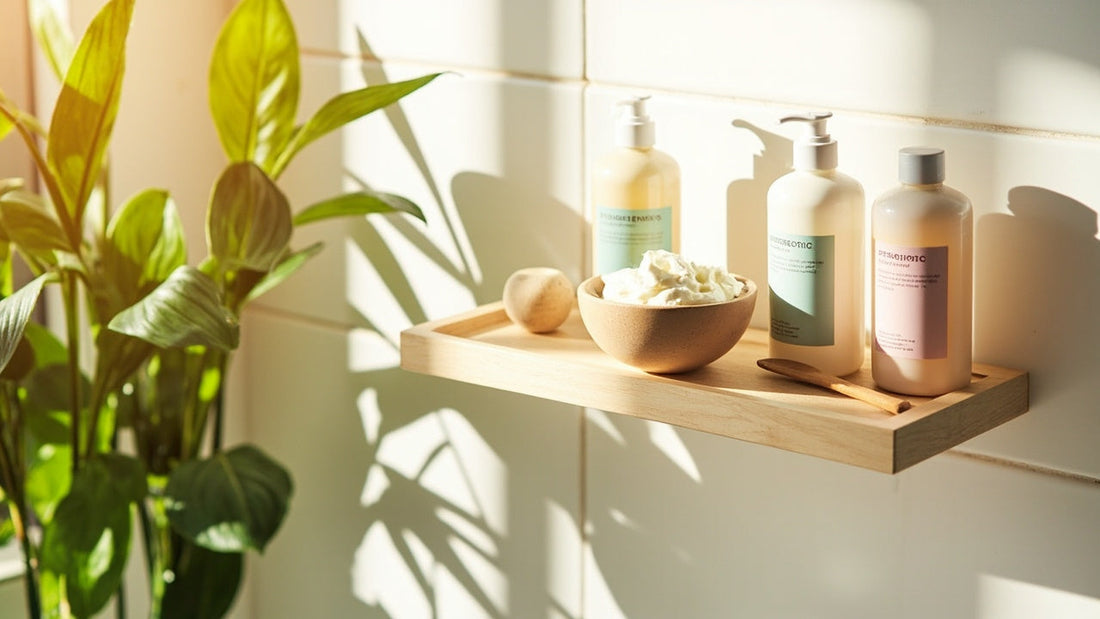
Probiotic Skincare: Can Bacteria Balance Your Complexion?
Share
Bacteria and beauty don’t usually go in the same sentence—but probiotic skincare is changing that. Once reserved for gut health, probiotics are now a rising star in clean beauty routines, promising balanced, calm, and resilient skin. But can applying live or fermented cultures really transform your complexion?
Let’s explore the science behind probiotic skincare and how it can bring harmony to even the most unpredictable skin types.
The Skin Microbiome: Your Invisible Ecosystem
Your skin isn’t just skin—it’s a living, breathing ecosystem. Trillions of bacteria, fungi, and other microorganisms live on its surface, forming your skin microbiome. When balanced, this community protects you from harmful pathogens, regulates inflammation, and helps maintain hydration.
But when your microbiome is disrupted—by harsh cleansers, over-exfoliating, pollution, or even stress—it can lead to redness, acne, dryness, and sensitivity. That’s where topical probiotics come in.
What Are Probiotics in Skincare?
Probiotic skincare uses live bacteria, fermented extracts, or lysates (dead bacteria with beneficial components) to help restore your skin’s natural balance. Think of it like a reset button for your skin barrier.
The Balancing Probiotic Gel Cream uses a blend of fermented ingredients and prebiotics to feed the good bacteria on your skin while calming inflammation. It’s especially useful for skin that swings between dry and oily or flares up without warning.
Probiotics vs. Prebiotics vs. Postbiotics
Let’s break it down:
-
Probiotics are the actual beneficial bacteria.
-
Prebiotics are the "food" that helps those good bacteria thrive.
-
Postbiotics are byproducts of fermentation that deliver skin-soothing and antioxidant effects.
All three can support your skin’s health—especially when used in tandem.
The Restore & Soothe Probiotic Serum contains both pre- and postbiotics, making it a multitasking powerhouse for redness-prone or compromised skin.
Who Should Try Probiotic Skincare?
If your skin feels sensitive, imbalanced, or prone to breakouts and redness, probiotic skincare might be your missing link. It’s particularly helpful for:
-
Acne-prone skin: Probiotics can calm inflammatory breakouts and reduce the overgrowth of harmful bacteria like C. acnes.
-
Rosacea or redness: They help reinforce the skin barrier and reduce inflammation.
-
Stressed skin: Late nights, travel, or environmental exposure can throw your microbiome off—probiotics gently bring it back to balance.
For example, a working woman juggling meetings, screen time, and city air pollution might use the Calm Barrier Microbiome Mist midday to reset her skin without stripping or adding weight.
How to Incorporate Probiotics Into Your Routine
Start with one product—a serum, mist, or lightweight cream. Probiotic skincare is typically gentle and pairs well with other ingredients like hyaluronic acid, squalane, and ceramides. Avoid layering it with strong exfoliants or acne treatments right away; let your skin adjust.
Most importantly, consistency is key. Like gut health, microbiome balance takes time.
Good Bacteria = Good Skin Days
Probiotic skincare isn’t just a trend—it’s a holistic approach to skin wellness. By working with your skin rather than against it, these formulations help you cultivate a calm, strong, and visibly healthier complexion.
Let your skin’s natural intelligence lead the way—because beauty starts with balance ✨
